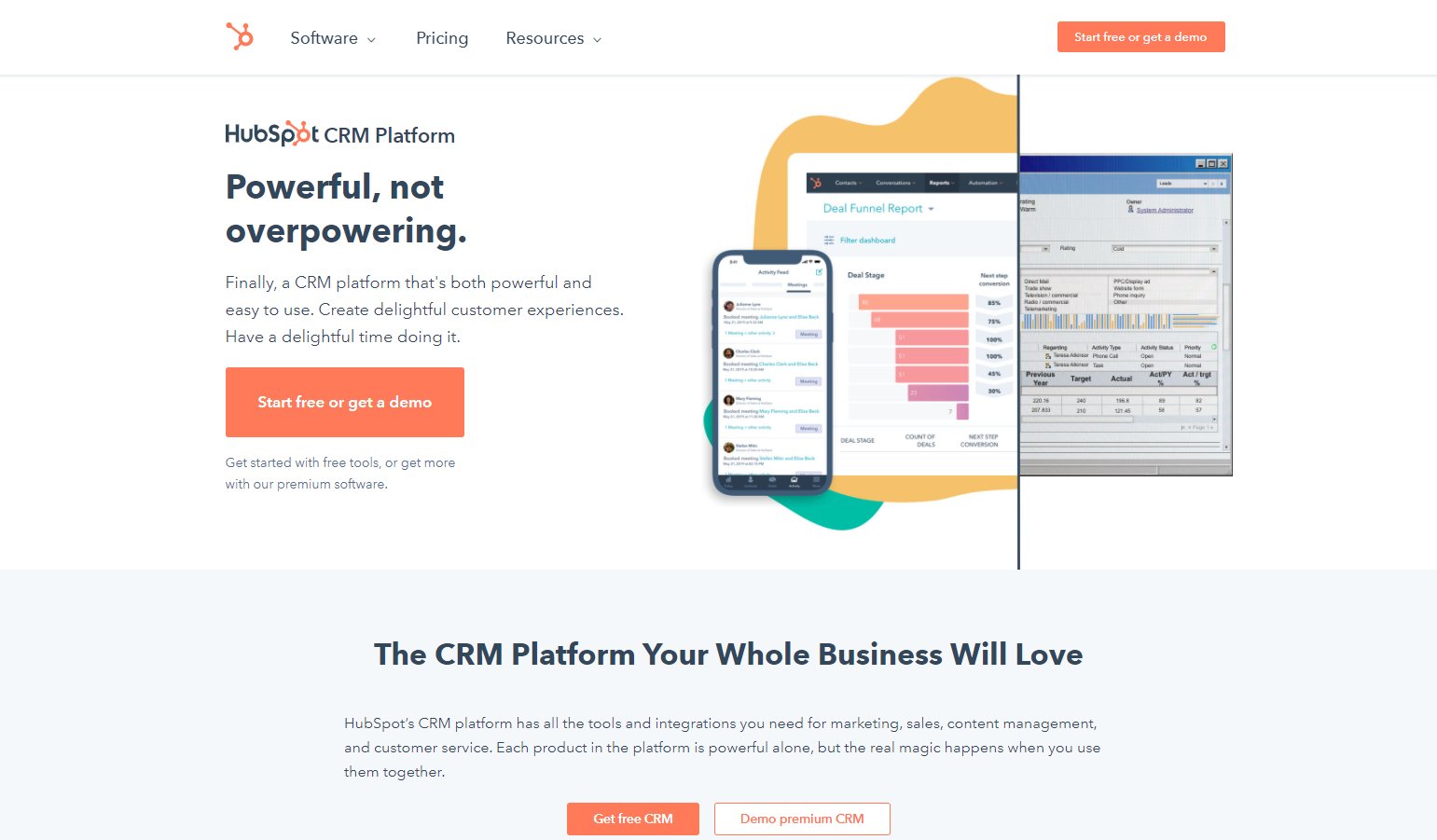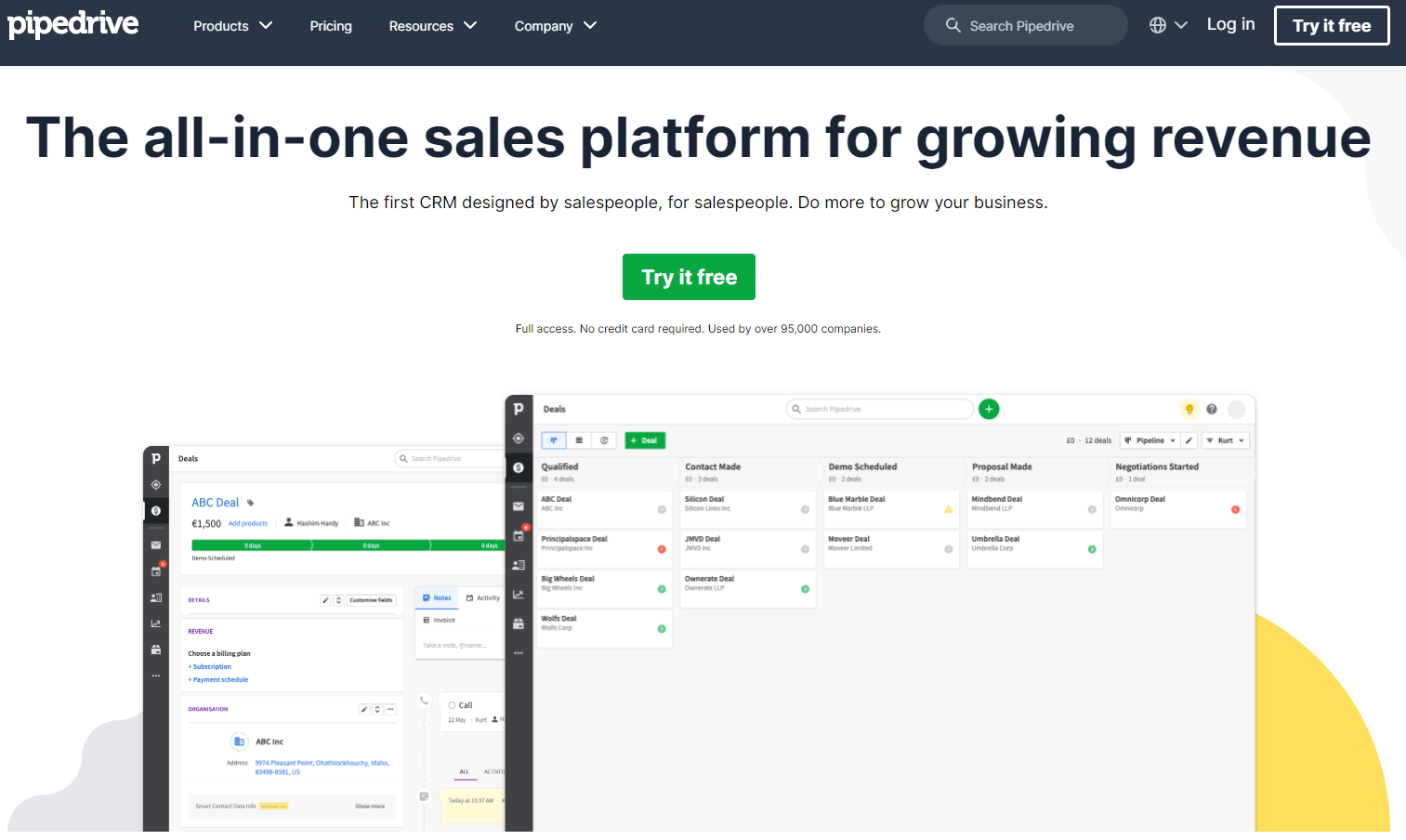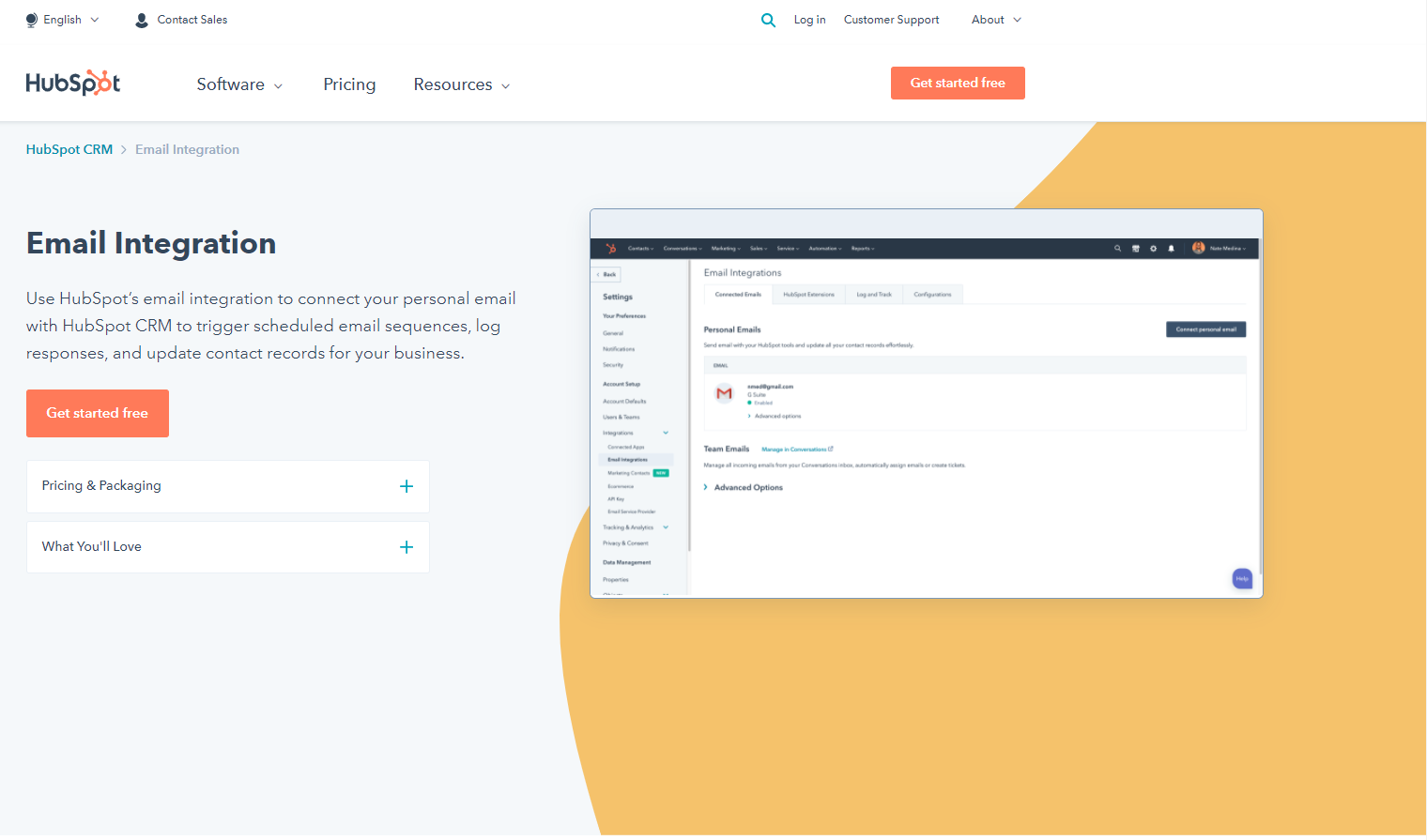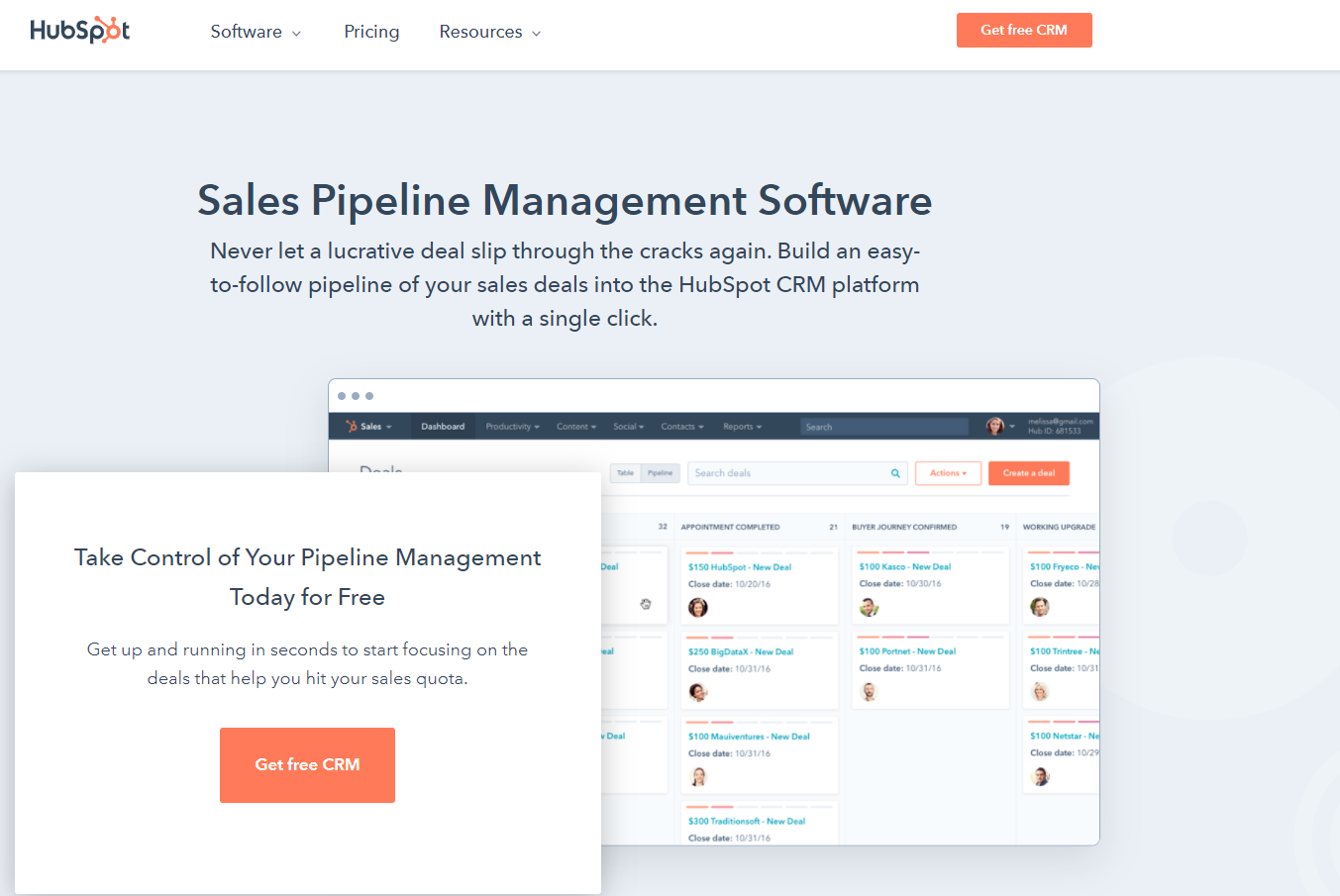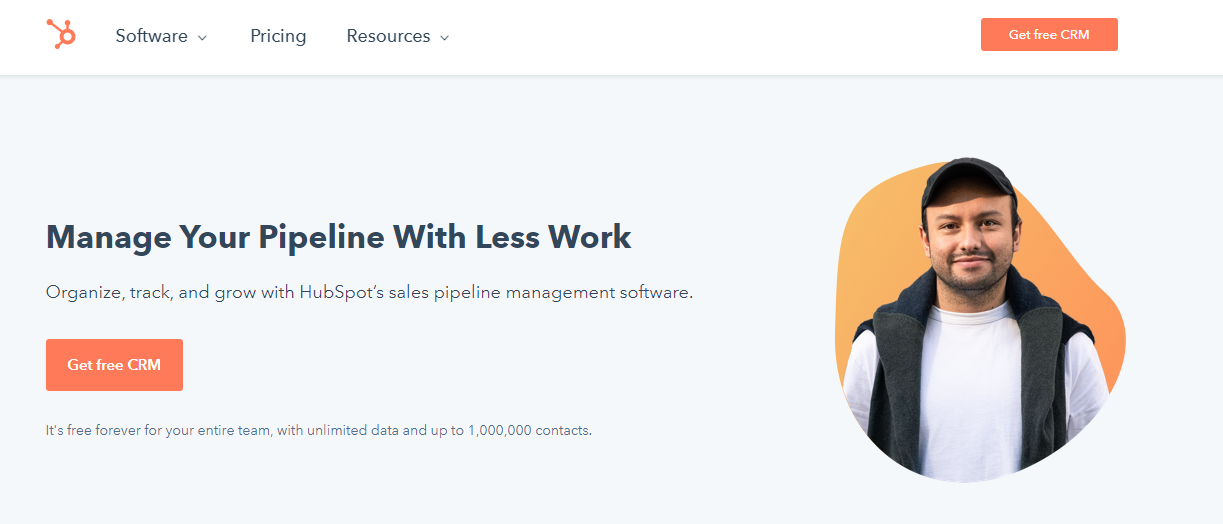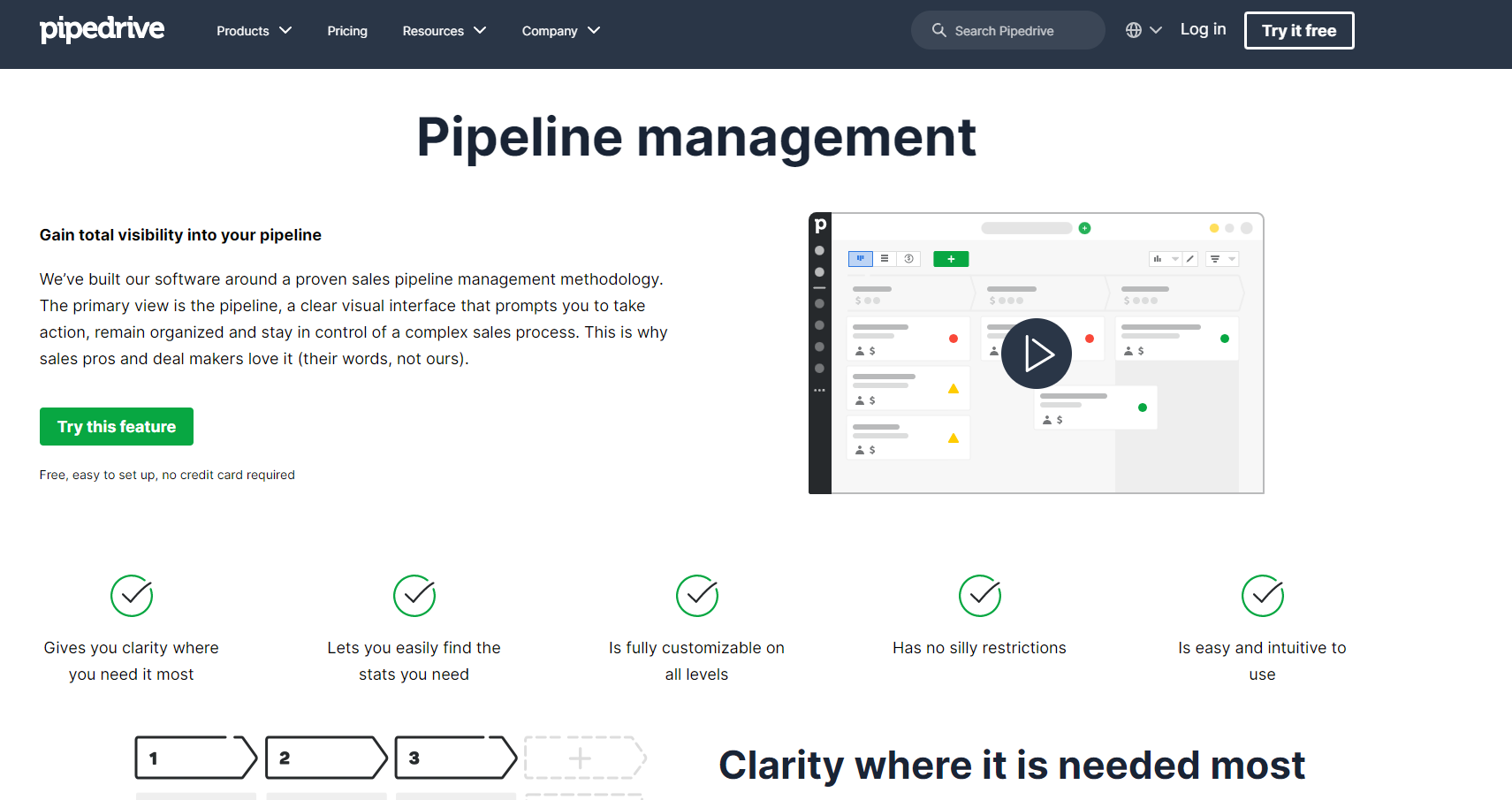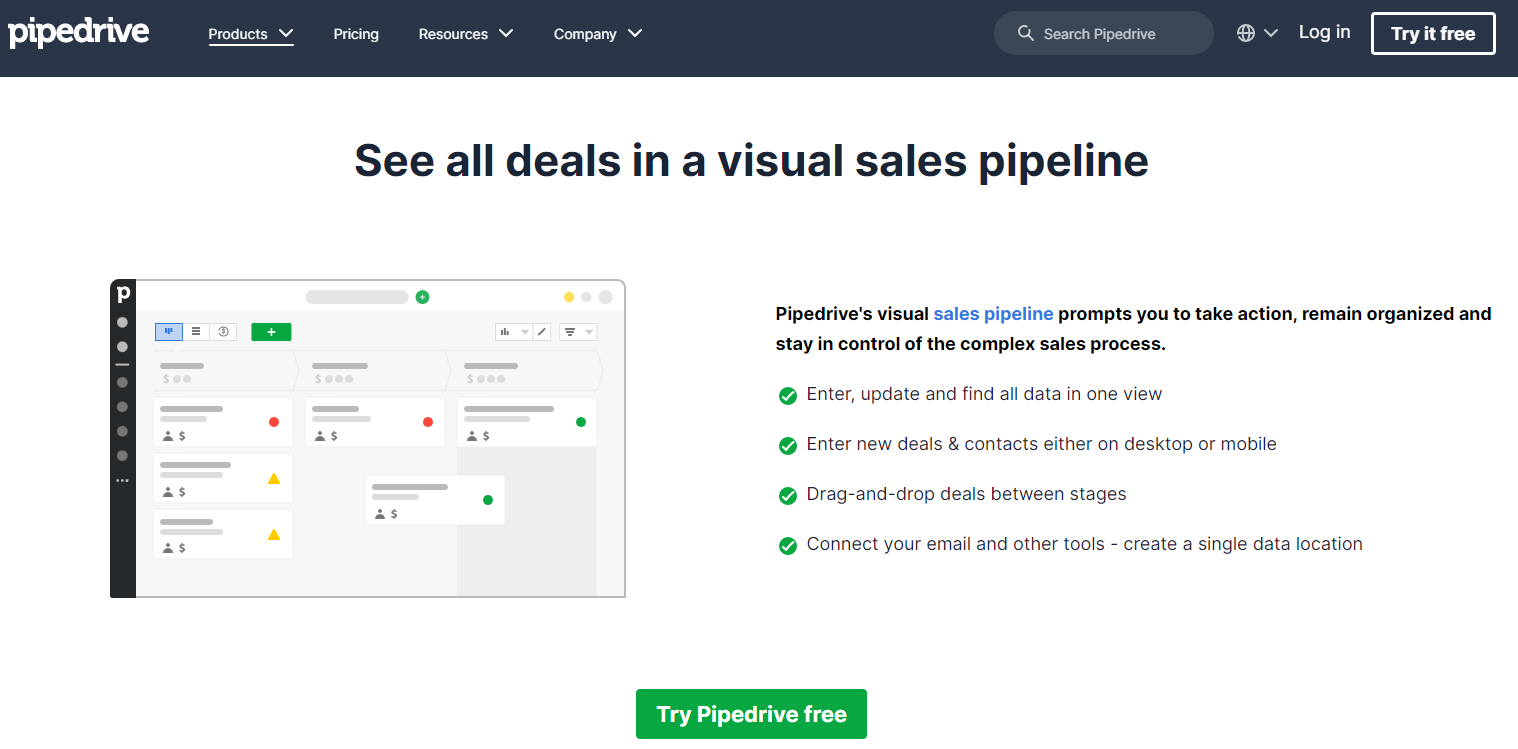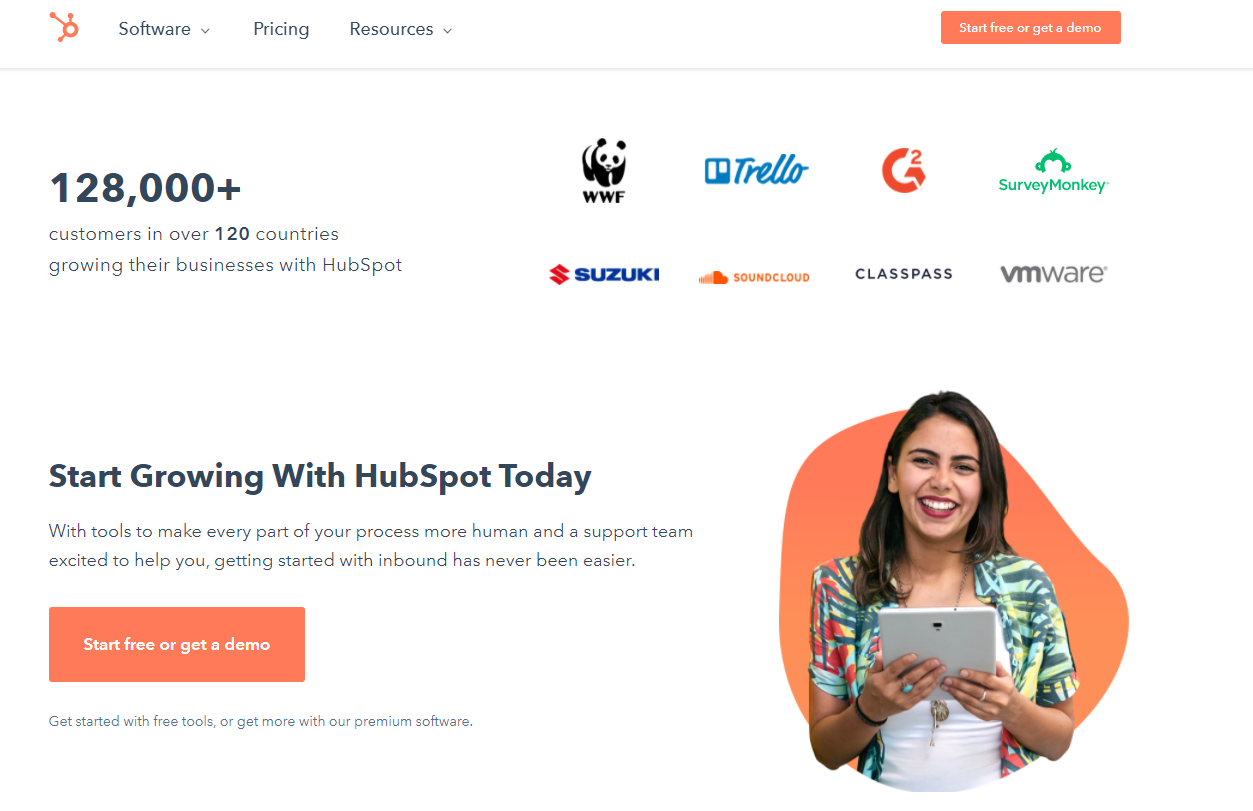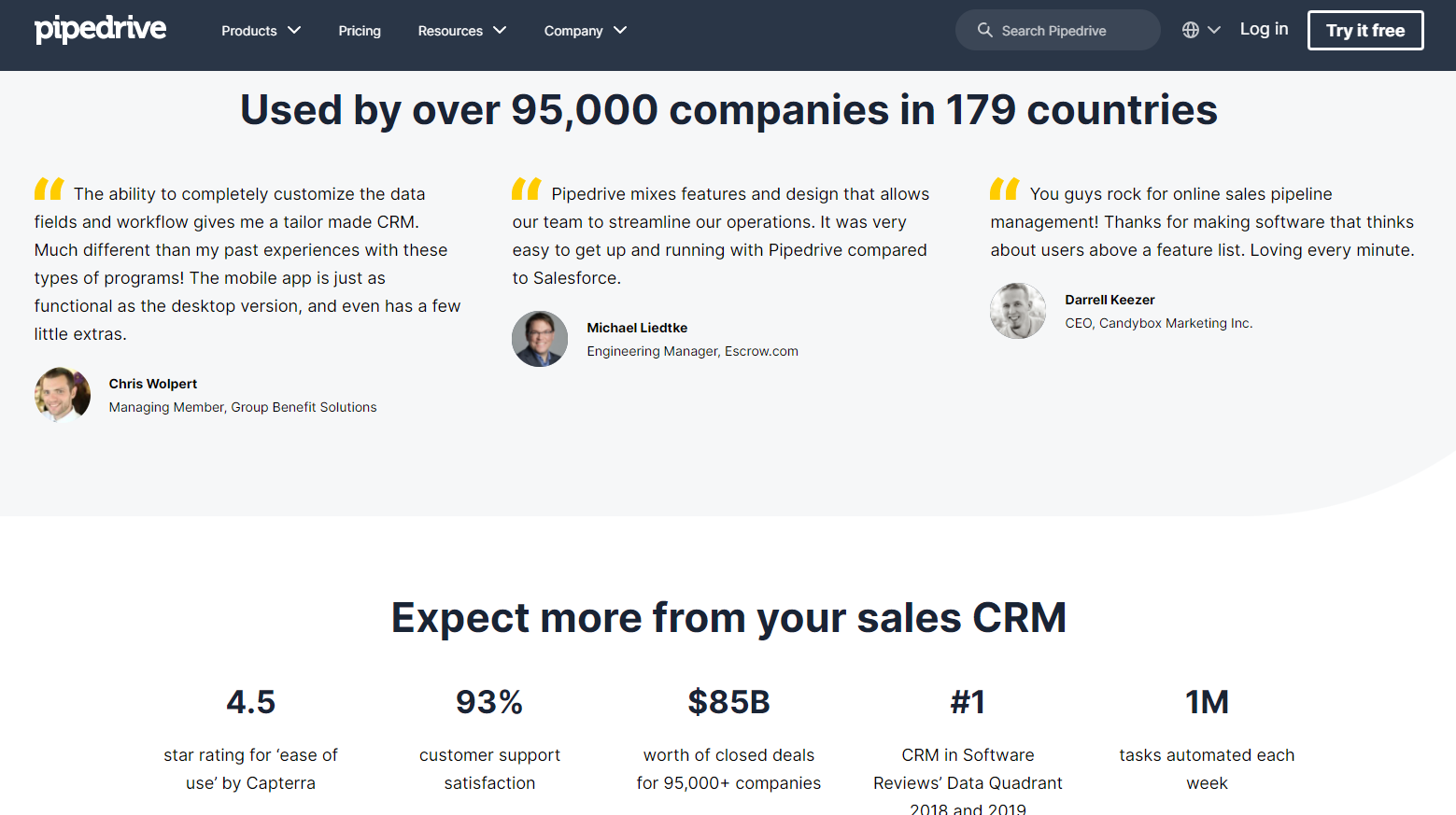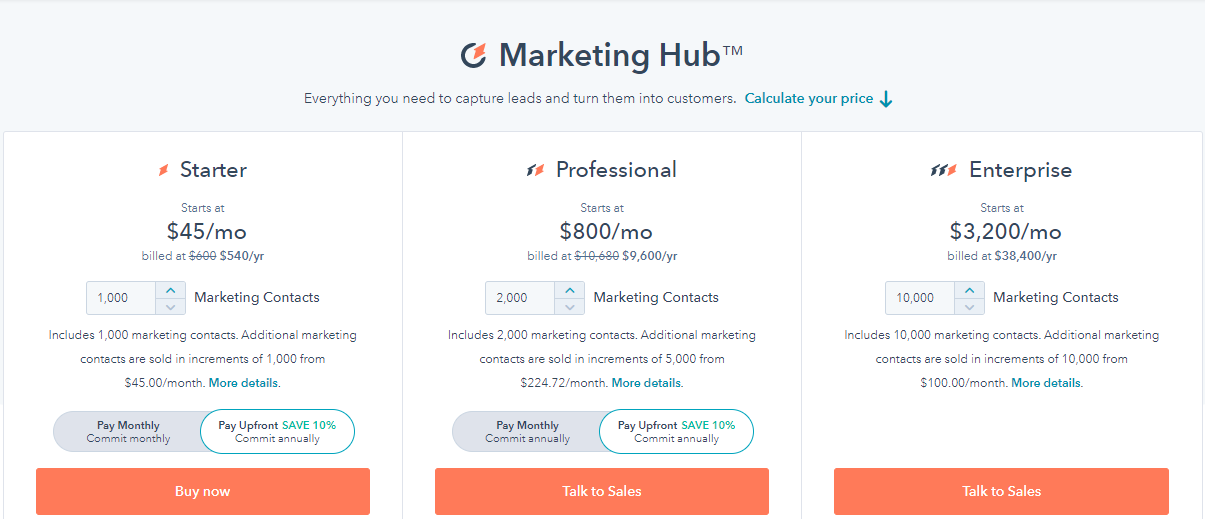Are you also confused between Pipedrive and HubSpot ?
Struggling to know that which one is better and why ?
So, we are here to help you. Here , in this article you are going to know all about Pipedrive and HubSpot which will surely help you in deciding between the two.
Just stay with us till end.
Pipedrive Check out
Check out
|
HubSpot Check out
Check out
|
|---|---|
| $15/mo* | $45/mo* |
Best tool that helps sales teams keep track of their leads. |
Best for creating a frictionless customer experience. |
|
|
|
|
|
|
|
A little tricky. |
Very user friendly. |
|
Cost friendly and affordable. |
Not everyone can afford. |
|
24*7 available. |
Try their best to solve as soon as possible. |
| Check out | Check out |
This article is all about Pipedrive vs HubSpot and if you want to know the same then stay tuned with us.
Pipedrive and HubSpot are Customer Relationship Management (CRM) platforms created to automate nurturing leads and customers that connect with your organization.
Particular CRMs concentrate on different areas of the customer journey, while others cover them altogether.
Pipedrive and HubSpot are both viable CRM options based on your requirements, but comparing their features and use cases will help you make a more informed choice.
Pipedrive is a Customer Relationship Management (CRM) application that enables you to generate more engaged Leads.
This ultimately allows you to target the appropriate individuals at the proper time and turn them into sales in your Sales Pipelines.
On the other hand, HubSpot is a customer relationship management system (CRM) that enables you to manage relationships with all of your customers, increase company efficiency, monitor client resources, purchase information, etc.
This article will familiarize you with the nature and features of Pipedrive vs HubSpot, as well as the factors that influence your selection of Pipedrive vs HubSpot.
Pipedrive vs HubSpot 2025: Overview
We’ve covered all you need to know about Pipedrive vs Hubspot in this post to help you make an informed decision.
What is HubSpot?
HubSpot is a cloud-based customer relationship management (CRM) platform designed to simplify the process of meeting corporate demands.
It is intended to assist firms in more efficiently achieving their sales goals. It is not geared toward a particular size of business; it can manage the business operations of any firm size.
HubSpot serves as a foundation for the other HubSpot Softwares – Marketing Hub, Sales Hub, Service Hub, Content Management System Hub, and Operations Hub.
This is what differentiates HubSpot and helps you decide between Pipedrive and HubSpot. Each of these pieces of software has both free and premium versions.
Depending on your existing requirements, you may choose to utilize HubSpot’s products or acquire the whole platform.
What is PipeDrive?
In contrast to other Customer Relationship Management (CRM) systems, Pipedrive is a cloud-based Sales CRM that focuses on providing simple-to-use Pipeline Management solutions for planning Sales Activities, and Monitoring Leads.
Its Pipeline Management solution ensures that the CRM is more sales-oriented by providing users with a visual picture of the buyer’s path and outcomes.
Pipedrive CRM enables you to manage your sales activities, follow the status of sales leads, and see your results graphically, as well as interface with other third-party services to increase sales efficiency and save time.
The Dashboard in Pipedrive enables you to organize Leads by deal date, size, and activity. In this manner, you can keep on top of sales opportunities and enhance your sales outcomes.
PipeDrive vs HubSpot: Features Comparison
Below we will get to know more about the features of both Pipedrive vs HubSpot for better understanding. Come let’s understand in brief now.
1. Pipedrive vs HubSpot: Email Integration
Hubspot integrates completely with email services such as Office 365, Outlook, G Suite, and, of course, Gmail to help you interact with prospects, leads, and customers.
This alone provides a diverse selection of email marketing templates tailored to each level of prospecting or marketing. The library here is relatively extensive. However, you may create your specific templates if you choose.
The whole purpose of employing email marketing templates is to avoid recreating repeating emails. As a result, Hubspot guarantees that you can always access any of your templates directly from your mailbox.
And if you’re unsure how to begin, here’s a solid pointer: use Hubspot’s real-time data analytics to determine which templates work best.
You can choose how well your consumers have responded by examining the associated email open rates, as well as for analytics on the attachments, links, and buttons they click.
If the figures are favorable, you may distribute the most successful templates to your salespeople. Hubspot will then provide everyone access through their inboxes, optimizing their emails quickly.
In terms of SEO, it’s usually a good idea to send emails at the appropriate times. After determining the optimal times based on the analytics, you can use Hubspot’s email scheduling to plan several emails through Gmail.
Go to the schedule button in the message compose box and pick an appropriate time. You may continue with any of the preset times or specify your own.
Scheduled messages are then stored in your draft folder until they are ready to be sent. This enables you to update the site content or cancel the emails entirely in the meantime.
If you choose to advance, you can be confident that Hubspot will not stop there. It then tracks the emails sent and alerts you when they are read or acted upon. You may, however, opt to disregard the resulting desktop notice.
However, if you want to clinch the transaction swiftly, you might consider sending a well-personalized follow-up email to the prospect.
This is Hubspot’s approach of assisting you in concentrating your efforts on warm leads instead of spending further resources on cold ones.
Pipedrive is also pretty useful for managing emails. Before you even begin, it provides you with a selection of well-designed pre-prepared templates. You should be able to locate some suitable ones here.
However, the system enables you to create your bespoke ones if you do not. In any case, the technique is simple and uncomplicated. Additionally, integrating Pipedrive with a variety of third-party email systems is straightforward.
Which essentially enables you to execute your whole email campaign without ever leaving Pipedrive. Now, from the resulting sales inbox, you’ll notice several premium features aimed at streamlining the whole communication process.
In a nutshell, you’ll be able to send emails directly to leads and customers, sync everything with your email account, plan activities, associate contacts with deals, modify your email signature and templates, and coordinate final message tracking.
To begin, the tracking feature was created to keep track of almost every action performed on the emails you send.
Apart from getting alerts when emails are opened, you also get real-time information on recipients clicking on links or downloading files. You have the option of responding immediately upon receiving notice.
Alternatively, you may schedule the answer for delivery at a later date and time. Additionally, you may want to explore associating the contacts with particular offers depending on their responses.
However, your team members may follow up on your behalf if you are unavailable since emails are automatically shared with everyone.
However, please understand me. This is not a permanent configuration. You may go to a private mode to exclude certain team members.
In any case, you will retain complete control over everything. Administrators, it turns out, can monitor all essential metrics, including messages associated with each sale and contact.
Pipedrive also has a fantastic feature called Smart Email BCC. This is especially advantageous for users whose sales processes are not entirely connected with their email systems.
2. Pipedrive vs HubSpot: Pipeline Management
I’m not sure about you, but I believe pipeline management is the most critical CRM Software feature. As a result, I was glad to discover that Hubspot has placed a premium on this by kicking you off immediately upon entering the dashboard.
The objective here is to assist you in securing all of the sales transactions you are currently working on as quickly as possible.
Thus, Hubspot enables you to easily create a visual structure of your transactions with a single click, assign tasks appropriately and track progress directly from the dashboard. However, pause for a moment. What are pipeline management deals?
A transaction, on the other hand, is precisely what you believe it to be. A conversion opportunity is a pipeline management object that indicates a conversion possibility.
Additionally, it includes all critical information areas such as transaction stage, size, associated organizations, and contracts.
Fortunately, you are not required to follow the pipeline’s default structure. You may completely configure the system from the ground up to fit your unique sales methods and preferences.
And do you know what else? That requires no technological skill. It’s as easy as learning the alphabet to add, delete, and amend offers. You may also include your custom data fields into the offers to fully describe them.
When you need to move transactions between stages, click and drag them across the window. Otherwise, assigning responsibilities to your sales personnel is another technique to expedite negotiations.
Now, I’m aware of your thoughts at this point. What solutions are available if you operate a big firm that conducts many transactions concurrently? Re-entering information into each area seems like a tiresome task in this circumstance.
Thus, Hubspot handles business when you add new deals from a firm or contact record to alleviate the burden associated with manual processes. It populates the respective fields with pertinent information in an organized manner.
As a result, you’ll be able to focus on the most promising conversions while still managing the entire sales pipeline. And what parameters does Hubspot provide in this regard?
I can say with certainty that Hubspot CRM does not tolerate slackers. Sales agents who sleep on their duties should be especially cautious of this software since it allows access to both team and individual pipeline performance metrics.
However, it is not all. Additionally, you may monitor monthly progress on critical sales activities, different sales quotas, as well as the overall health and worth of your pipeline. This alone enables you to identify discrepancies and delays as they occur.
As a result, you’ll be able to organize your team and direct them toward the most important tasks and transactions. While some notable differences exist, Pipedrive’s pipeline management is quite similar to Hubspot’s.
In general, the most evident characteristic is the same layout technique. Pipedrive’s primary window, it turns out, is likewise concentrated on pipeline management tasks, with a well-organized visual layout for managing almost everything.
It is designed in such a manner that it enables comprehensive visibility and monitoring of all complex sales processes. Apart from unbroken visibility, one of the features you’ll like most about Pipedrive is its straightforward approach to the whole pipeline.
You may add new activities, contacts, or transactions in real-time as they unfold. Additionally, to aid comprehension, the transactions are organized according to their sales stage.
Your team members may capitalize on this by allocating resources according to the location of each contract. And if you’re interested in the maximum team size that the pipeline can support, here’s the deal: there is none.
Pipedrive has designed it in such a manner that you may completely adjust it to your company’s sales operations. Apart from adding an unlimited number of sales agents, you can completely customize the activities and phases of the sales process.
Additionally, you may rename them appropriately and choose which characteristics to apply to each component. Pipedrive’s statistics tool assists you in monitoring the pipeline as the corresponding actions progress.
It includes all essential indicators necessary for analyzing the overall progress of sales processes. Additionally, if you choose to go deeper, the system has a robust filtering tool for examining the results.
Whichever way you look at it, the reality is that Pipedrive vs Hubspot both provide equal pipeline management capabilities. To begin, their dashboards include the pipeline as the main view.
Second, their sales pipelines have a straightforward design that visibly shows all aspects.
Apart from that, they are both very configurable. You have complete control over the addition and editing of deals, activities, team members, and stages, among other things.
Finally, you’ll be able to quantify everything with the help of Hubspot and Pipedrive’s analytical tools. Taking everything into consideration, let us declare a draw.
3. Pipedrive vs HubSpot: User Interface
To be sure, sales funnels are very dynamic, including several components and factors. As a result, to handle them properly, you’ll need a well-organized CRM system that integrates and presents data appropriately.
To be sure, Hubspot CRM excels at this. Immediately upon loading, you’ll notice a well-structured UI design with all critical parts grouped logically.
For example, you may filter all the transactions you’ve closed or lost, as well as any relevant contracts you’ve shipped, from the dashboard.
Indeed, you may arrange the trades by their company owners, value, names, and customer funnel stage. Locating their information is not difficult on Hubspot when it comes to customers.
You may manage this from the dashboard immediately upon logging in using the many system filters. Additionally, you’ll be able to watch your salesmen on the dashboard.
Before proceeding to further system operations, you may experiment with the controls to see how they all work, as well as the most exceptional performers. Pipedrive leaves nothing to chance in terms of usability.
As shown by its history, the creators desired a fundamental tool. And this is immediately apparent as you arrive on its dashboard. The user interface is surprisingly straightforward, with a minimalist aesthetic.
The general style is simple and arranged to enable easy access to almost all of the sales pipeline’s main components.
Indeed, Pipedrive greets you with a typical sales pipeline arrangement. You may proceed and submit your sales offers and ideas immediately.
However, if the default pipeline does not match your business model, Pipedrive enables you to customize its characteristics.
Now, when you begin utilizing the pipeline, you’ll see an unusual emblem next to each trade. It is meant to make it simple to analyze the transaction’s status with a single look.
The symbol alone indicates whether a transaction has any outstanding actions, whether those activities are on track, or whether you need to follow up on them.
Hubspot vs. Pipedrive is meant to be very simple to use. Their user interfaces are well-organized and have simple layouts, making it simple to traverse the system.
You will certainly have little difficulty picking up the ropes on any of the two. One especially intriguing aspect is the visual presentation of bargains on the dashboard.
This alone gives a clear perspective of the sales funnel, allowing you to monitor and handle everything starting from the minute you log in to your account.
In a nutshell, they both contribute to overall interface design and user-friendliness.
Pipedrive vs HubSpot: Pricing comparison
Pipedrive stands out the most in terms of pricing. Its 14-day free trial period is limited. The first paid version is the “Essential service,” which costs US$15 per month or US$12.50 yearly.
Pipedrive’s pricing structure is one of its most vital points. Various alternatives and pricing points are available, but the fourteen-day free trial is limited.
Following that, the first paid plan costs US$15 per month or US$12.5 per month if paid yearly.
This version includes phases of the sales cycle customized for your product or service, as well as an activity calendar; it is suitable for small businesses and sales teams focusing on one-to-one sales.
The Advanced edition is the next step up (US$24.90 per month with an annual subscription or US$29 per month without a yearly contract).
It includes intelligence services such as email monitoring, email automation, and data analysis; it is ideal for businesses that anticipate development but lack the resources to devote to repetitive administrative activities.
The Professional model is appropriate for more strong businesses with many management levels (US$49.90 per month when paid yearly or US$59 per month when paid monthly).
The professional edition of Pipedrive includes tools for managing teams and analyzing performance, call control, an automatic calendar with limitless appointments, and a reporting dashboard.
Finally, there is a version for businesses that need a minimum of ten users (at the cost of US$99 per month per user), which includes a dedicated account executive and more flexibility to the business’s demands.
If you’re ready to invest that cash, though, it makes sense to examine alternative possibilities, such as HubSpot.
Pipedrive vs HubSpot: Main Difference
The primary distinctions between Pipedrive vs Hubspot are as follows:
- Pipedrive’s paid plans are less costly than Hubspot’s.
- Hubspot’s premium packages include a setup cost, while Pipedrive does not.
- Hubspot offers a free trial period. However, Pipedrive does not.
- Compared to Pipedrive, Hubspot interfaces with a more significant number of third-party products and services.
- Hubspot has a split-testing feature. However, Pipedrive does not.
- Hubspot is a marketing and sales platform, while Pipedrive is exclusively a sales platform.
FAQs on Pipedrive vs HubSpot
What is Pipedrive best for?
Pipedrive provides customers with unprecedented insight and control over their sales pipeline, guiding sales management, sales teams, and support groups through daily actions that consistently move leads down the sales funnel and closer to a win.
Is Pipedrive better than Salesforce?
Pipedrive is more affordable, with simple-to-use features for handling leads and direct sales. In comparison, Salesforce is a sophisticated CRM with comprehensive functionality for managing more complicated sales funnels. Pipedrive is a superior solution for small firms searching for an easy-to-use CRM with visualization capabilities for their sales funnel.
Is Pipedrive expensive?
Pipedrive offers four distinct versions, the most costly of which is $99 per user each month (billed annually). As with all other SaaS products, each version has the same features as the previous edition but adds a few more and is priced more.
Is Pipedrive a CRM?
Yes, it is a web-based sales CRM.
Is Pipedrive safe?
Each company's data is maintained in a separate database in Pipedrive. This eliminates the possibility of unintended data breaches in another company's database. The Pipedrive program utilizes only secure HTTPS connections, which encrypt all data.
Quick Links :
Conclusion: Pipedrive vs HubSpot 2025
The post introduced you to Pipedrive vs HubSpot and discussed the factors that influence your selection between the two.
While Pipedrive is a sales CRM, HubSpot is much more.
Pipedrive is wholly focused on enhancing an organization’s sales process via the provision of necessary integrations and reasonably priced pricing options.
HubSpot is a one-stop shop for everything from sales to marketing to operations.
Pipedrive’s limitless Contacts and Sales Pipeline, as well as several other features, outperform the HubSpot plan.
Your CRM selection should depend on your unique requirements; however, as a small/medium-sized business looking to expand and become more adaptable, Pipedrive is an excellent alternative.

